Everything You Need To Know About Havana Rabbit
The Havana rabbit was not forming, in Cuba, despite its name. The Havana rabbit originated in Holland in the late 1800s, when a rich brown rabbit was born in a Dutch doe’s litter. The rabbit’s beautiful deep coloration inspired breeders to make a new breed. The rabbit gave the name “Havana” because it resembles the chocolate color of Cuban cigars from Havana.
This rabbit is a comparatively tiny breed that should not weigh more than 6.5 lbs. Their bodies are short and rounded. The top line should be a half-circle that rises over the hips and then descends to the tail. They have short, straight legs with dark toenails, short ears close together, medium-sized eyes, and a short head with full cheeks.
The American Rabbit Breeders Association (ARBA) recognizes Havana rabbits in four color varieties: black, blue, broken, and chocolate. The American Rabbit Breeders Association was the first to acknowledge the chocolate variety in 1916, followed by the blue type in the 1960s and the black variety in the 1980s. Finally, in 2007, the broken sort was officially recognized. The Havana rabbit variety has become very popular as a show animal and as a pet.
Does Havana Rabbit make good pets?
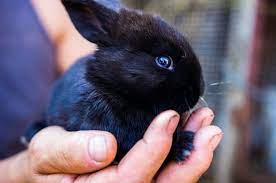 Havana rabbits are one of the calmest rabbit breeds. However, they are not recommended for children unless they are supervised. Havana rabbits are incredibly affectionate and crave attention. They are well-known for their friendly and laid-back temperament.
Havana rabbits are one of the calmest rabbit breeds. However, they are not recommended for children unless they are supervised. Havana rabbits are incredibly affectionate and crave attention. They are well-known for their friendly and laid-back temperament.
Plus, they are observant and expressive without being stressed. However, there are a few Havana’s who are semi-aggressive. Therefore, before purchasing these Havana rabbits, it is essential to understand the temperament of the parents. Consequently, they can make excellent pets as they can keep indoor or outdoor bunnies.
What do Havana Rabbits eat?
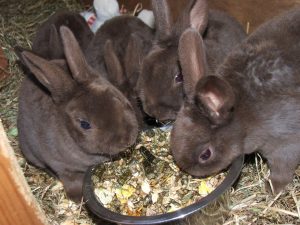 Havana bunnies, just like any other rabbit breed, require a special diet that is at least 70% hay. Their diet is made up of a nutritious combination of pellets, leafy greens, fruits, and vegetables. However, we have to be careful and aware of the types of leafy greens when we feed the rabbit, as some of them (like iceberg lettuce) are deficient in vitamins and nutrients and contain labdanum, which can be harmful in large quantities.
Havana bunnies, just like any other rabbit breed, require a special diet that is at least 70% hay. Their diet is made up of a nutritious combination of pellets, leafy greens, fruits, and vegetables. However, we have to be careful and aware of the types of leafy greens when we feed the rabbit, as some of them (like iceberg lettuce) are deficient in vitamins and nutrients and contain labdanum, which can be harmful in large quantities.
Also, we must be cautious about the vegetables we feed the rabbit, as some of them are harmful, such as beans, cabbage, potatoes, and some fruits with high sugar content. Other than that, most of our rabbit’s diet should consist of fresh, filtered water and Timothy hay. Always have them available to our rabbit in multiple locations throughout the house. Keep sugary treats to a minimum and supplement with a daily serving of greens for extra vitamins and minerals.
Despite their small size, it is critical to give these Havana plenty of room to move, explore, and stretch in their enclosure. If at all possible, litter train them so that they can roam freely around the house.
How big is a Havana Rabbit?
The Havana rabbit is a medium-sized rabbit with a short, round body that forms a half-circle over the hips and rounds towards the tail. Adult Havana rabbits should not weigh more than 6.5 lbs. (3 kg), and their ideal weight is around 5 lbs., according to the American Rabbit Breeders Association (2.3 kg).
Are Havana Rabbits aggressive?
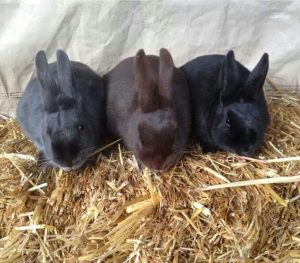 Havana rabbits are gentle and pleasant. This breed will bond almost instantly with its owners as long as they treat carefully, fed, and socialized with other rabbits and people. Havana’s are good show rabbits since they are pet rabbits. They are not particularly energetic, but they may enjoy playing and just doing mid-air hops on the situation.
Havana rabbits are gentle and pleasant. This breed will bond almost instantly with its owners as long as they treat carefully, fed, and socialized with other rabbits and people. Havana’s are good show rabbits since they are pet rabbits. They are not particularly energetic, but they may enjoy playing and just doing mid-air hops on the situation.
This breed could do well indoors, but it should let out daily to get some fresh air. It enjoys sitting on your lap, getting pets and cuddles, but don’t be surprised if it isn’t always receptive and may prefer to be left alone. With this behavior, Havana makes a perfect companion, a rabbit for both seniors and single people. Thus, they are not aggressive pets to keep.
What’s the average lifespan of a Havana Rabbit?
The Havana rabbit has a life expectancy of five to eight years. However, with regular vet checkups and proper care, some bunnies can live for up to ten years.
How fast does Havana Rabbit grow?
Depending on the breed, all the rabbits reach their maturity at different ages. For Havana Rabbit, they grow. These rabbits grow differently based on their average weight, which reduces from more than 7 pounds (3.2 kg) up to a maximum of 6.5 pounds.
How do you bond with a Havana Rabbit?
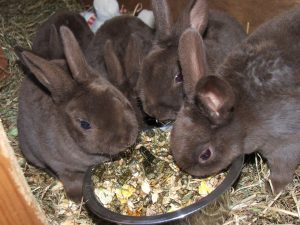 Captive-bred rabbits can train to be calm and friendly pets if we put in the time and effort. One method is to interact with the pet rabbit regularly. For example, train it to come to us when we call its name or eat food out of its hand. Furthermore, rabbits are social animals and will require companionship in addition from their owners. Rabbits who grow up with constant companions and play or train with their owners will be healthier, happier, and better-rounded adults.
Captive-bred rabbits can train to be calm and friendly pets if we put in the time and effort. One method is to interact with the pet rabbit regularly. For example, train it to come to us when we call its name or eat food out of its hand. Furthermore, rabbits are social animals and will require companionship in addition from their owners. Rabbits who grow up with constant companions and play or train with their owners will be healthier, happier, and better-rounded adults.
Havana rabbits are meticulous groomers, just like other domestic rabbits. Rabbits groom each other, and experts believe that this is one way for rabbits to bond with one another. Mother rabbits may see grooming their babies in the nest, but this will not last long as they will leave the nest as soon as they can. She will only come back in the evening to nurse her babies for a few minutes.
In other words, these Havana rabbits are active during the day and sleep at night, just like other domestic rabbits. Feeding this pet rabbit should therefore be done in the morning when they are engaged. However, captive rabbits can sleep for many hours a day, and they may sleep close together to keep warm.
Final thought
Whether named after a beaver or a fine Cuban cigar, the Havana is a loving and affectionate rabbit that has brought joy to many pet owners. However, if we want to adopt a smaller rabbit that is sweet and kind, this is one of the best breeds to consider.
https://www.rabbitproducersassociation.com/everything-you-need-to-know-about-havana-rabbit/https://www.rabbitproducersassociation.com/wp-content/uploads/2021/06/Havana-Rabbit-1024x768.jpghttps://www.rabbitproducersassociation.com/wp-content/uploads/2021/06/Havana-Rabbit-150x150.jpgUncategorizedThe Havana rabbit was not forming, in Cuba, despite its name. The Havana rabbit originated in Holland in the late 1800s, when a rich brown rabbit was born in a Dutch doe's litter. The rabbit's beautiful deep coloration inspired breeders to make a new breed. The rabbit gave the...FatimahFatimah ftmhuda@gmail.comAuthorNetherland Dwarf Rabbit
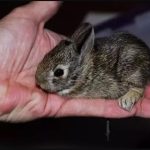

Leave a Reply